This engine is a rare Cosworth DFR V8 that was used in Formula 1 until an over-rev resulted in a spectacular connecting rod failure that resulted in a piston connecting with the valves and driving them up into the head.
The DFR was a later development of the Cosworth DFV V8 engine that was first used in Formula 1 in 1967.
The DFV and its derivatives went on to become the most successful F1 engines ever made by quite a margin, powering 12 Formula One Drivers’ Championship wins and 10 Formula One Constructors’ Championship wins.
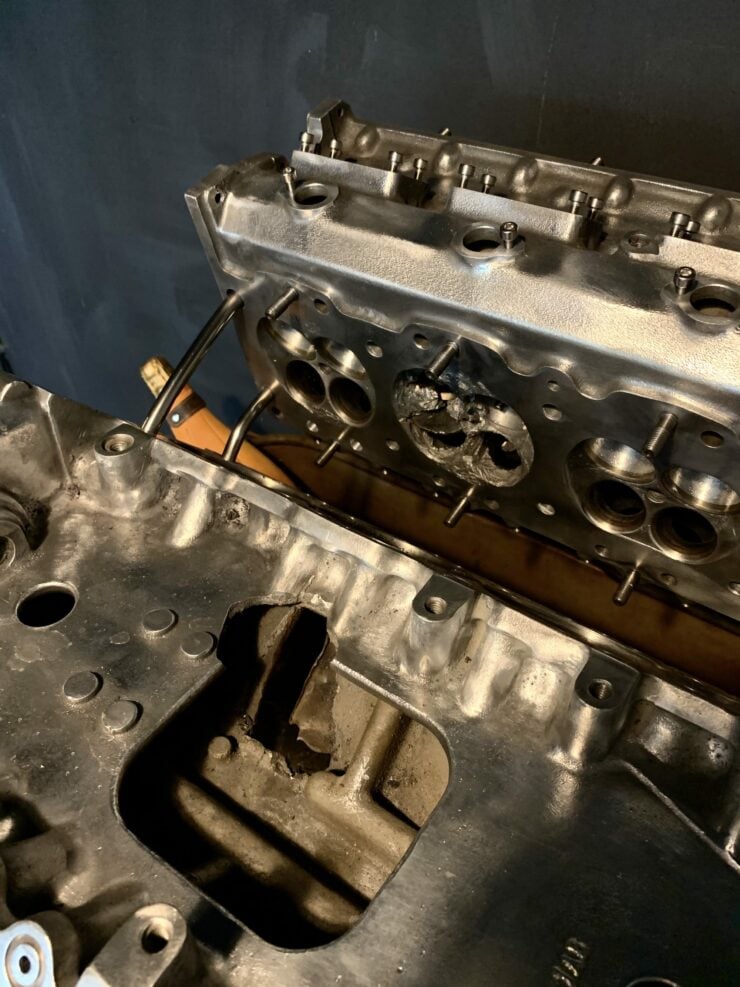
The right side head has been mounted in an open position to allow people to see inside and witness the carnage first hand.
In other motorsport disciplines the DFV would be no less successful, notching up two 24 Hours of Le Mans wins, six Formula 3000 Championships, 10 Indy 500 wins, nine CART Championships, and three USAC Championships.
The Cosworth DFV had originally been the brainchild of Lotus founder Colin Chapman. With the increase in displacement from 1.5 liters to 3.0 liters for the 1966 season onwards Chapman and his Lotus Formula 1 Team needed a new engine.
He approached former Lotus engineer Keith Duckworth who had recently founded the Cosworth engineering company with Mike Costin. The company name is formed by combining Cos and Worth from their surnames.
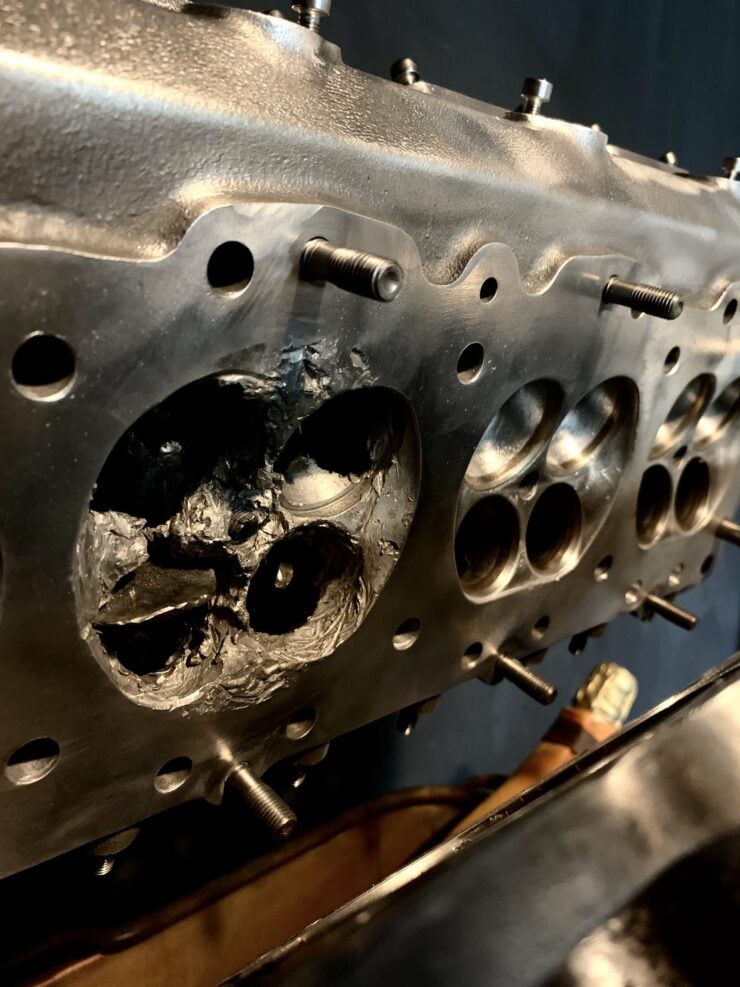
Here you can see that happens when a piston meets its valves, one of the valves has been driven up backwards and sideways into a new permanent home in the head.
The men agreed they could develop a race winning 3.0 liter Formula 1 engine but there was a catch – they needed a development budget of £100,000 – a king’s ransom in the mid-1960s.
Ever the wheeler-dealer, Chapman approached his allies at Ford and amazingly he was able to get approval for the project – but it would need to involve two engines, a four-cylinder FVA twin cam engine for Formula 2, followed by the 3.0 liter DFV V8.
The name DFV is an acronym for “Double Four Valve,” as the engine is a 90º V8 with double overhead cams per bank operating four valves per cylinder.
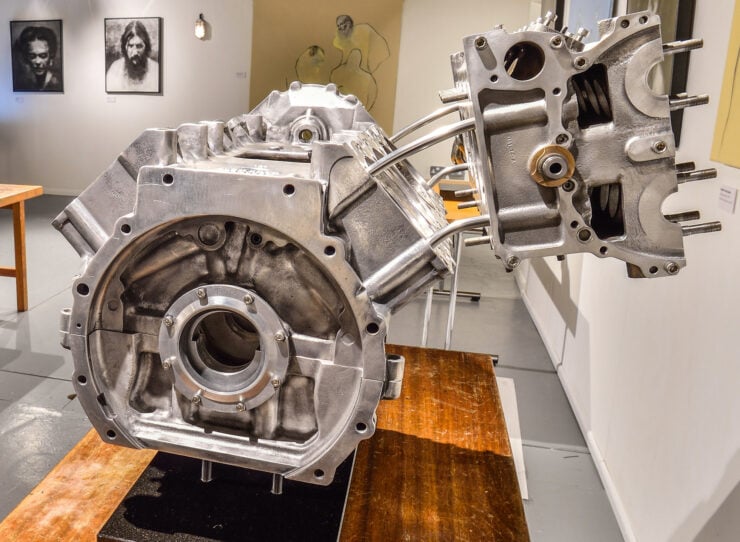
The engine has now been mounted to a display base, allowing it to be shown as a sculpture – it becomes a major conversation piece wherever it’s shown.
The Ford Coswrth DFV made its debut in the back of a Lotus F1 car in 1967 at the Dutch Grand Prix, Lotus driver Graham Hill would take pole position though retired after 10 laps with a mechanical failure. His team mate in another DFV-powered Lotus charged through the field and won the race.
The Cosworth DFR was developed two decades later in the mid-1980s using the DFV as its starting point. This new engine would compete against both the high-powered turbocharged cars and the naturally-aspirated competitors.
The DFR first powered a Formula 1 car in a Grand Prix in 1988, bolted into the back of a Benetton. It would defy the odds and finish third in the championship – making it the most highly-placed naturally aspirated engine, coming in behind the turbocharged engines in the Ferraris and McLaren-Hondas.
Above Video: This short film tells the extraordinary story of the Cosworth DFV.
Ultimately the DFR would be the swan song for the DFV series engines in top flight motorsport, capping a remarkable 20+ year run of successes.
The blown Cosworth DFR engine you see here has been carefully cleaned and fitted to a display base, the right side head has been retained and mounted in an open position to allow viewers to see inside the engine and the devastation that that failed connecting rod caused.
It’s being offered for sale by Mike O’Connor of Vintage Formula, the asking price is £18,000 and you can contact him here if you’d like to enquire about buying it.
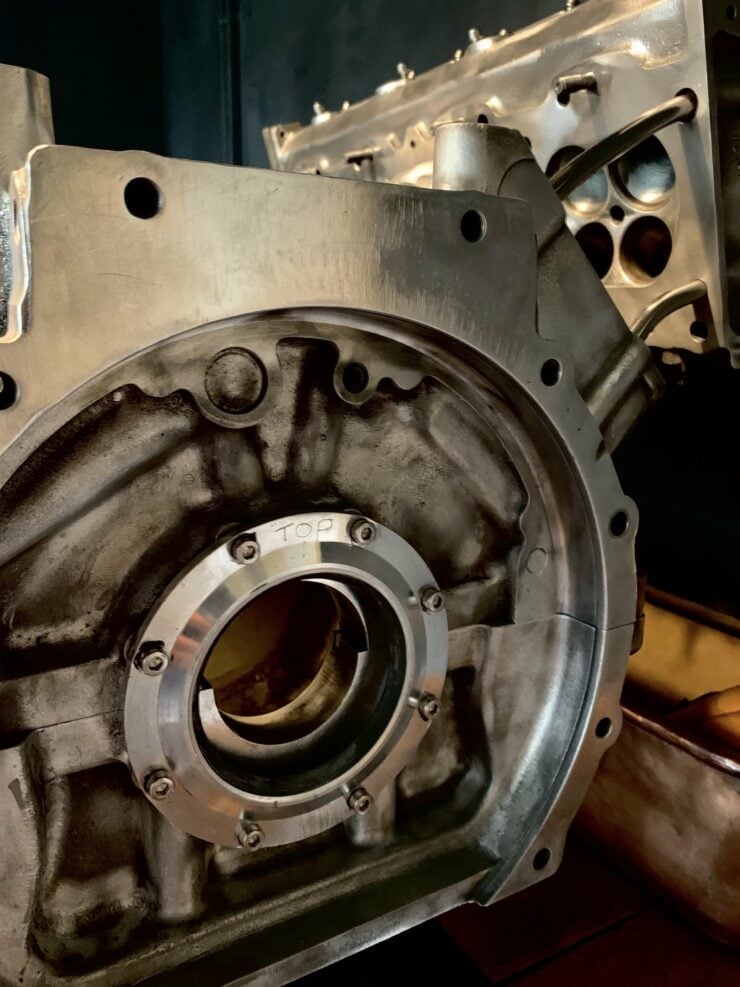
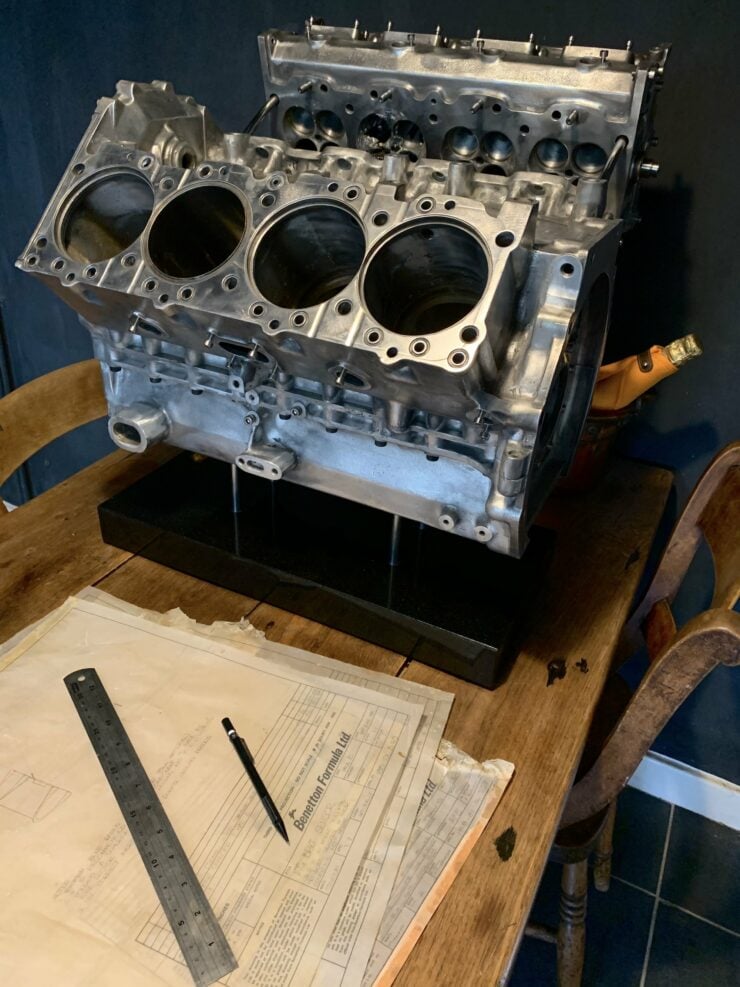
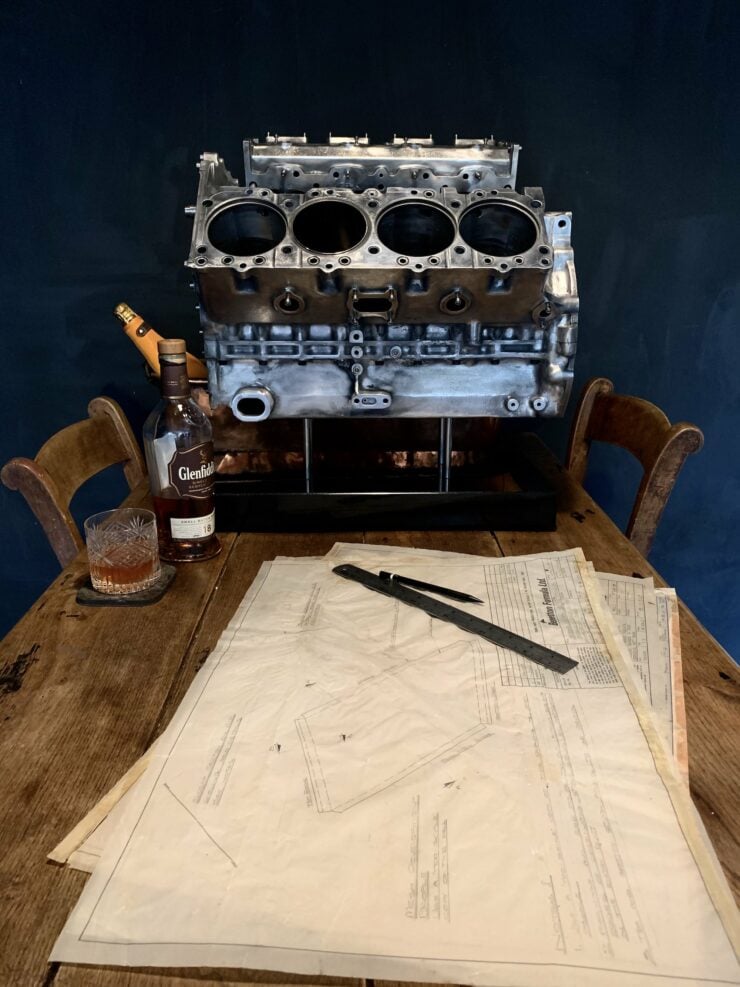
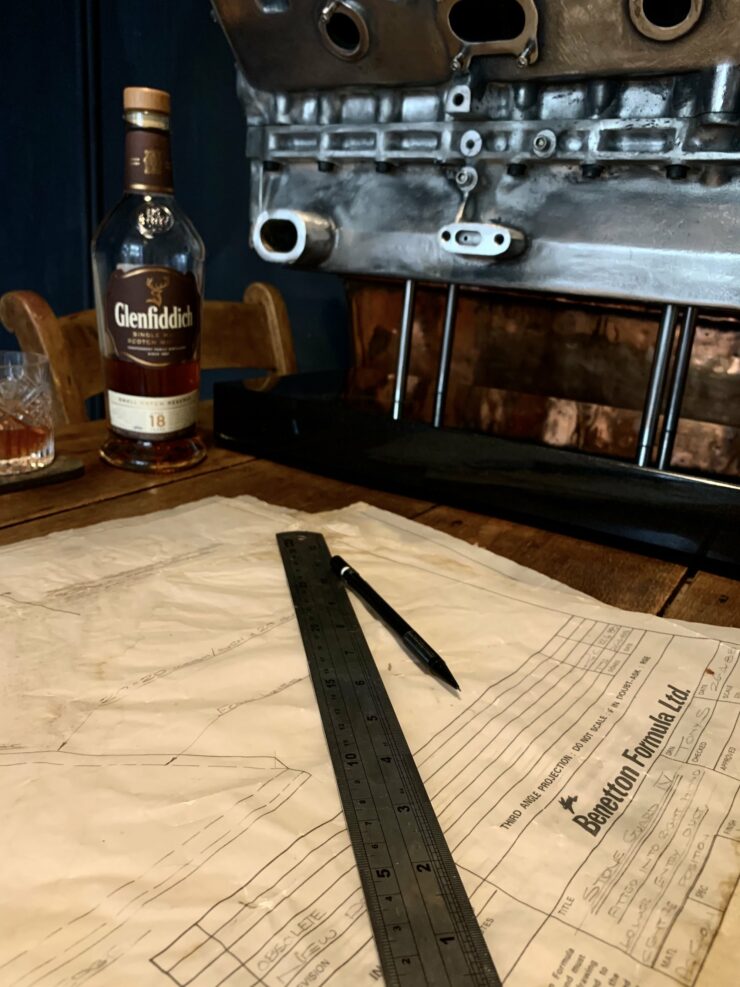
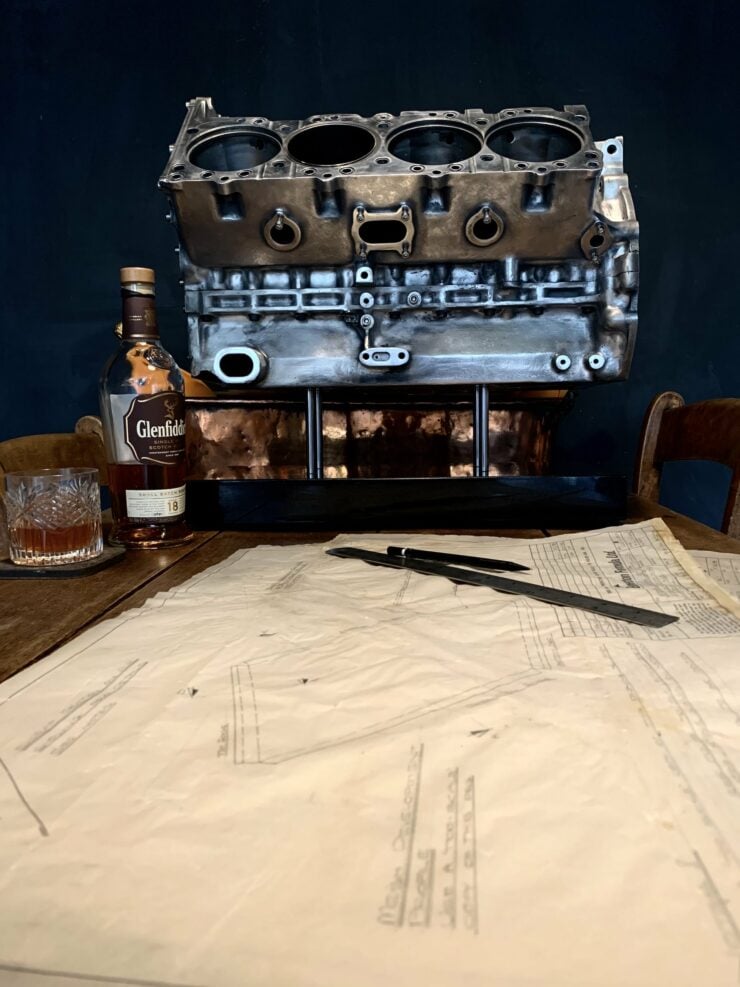
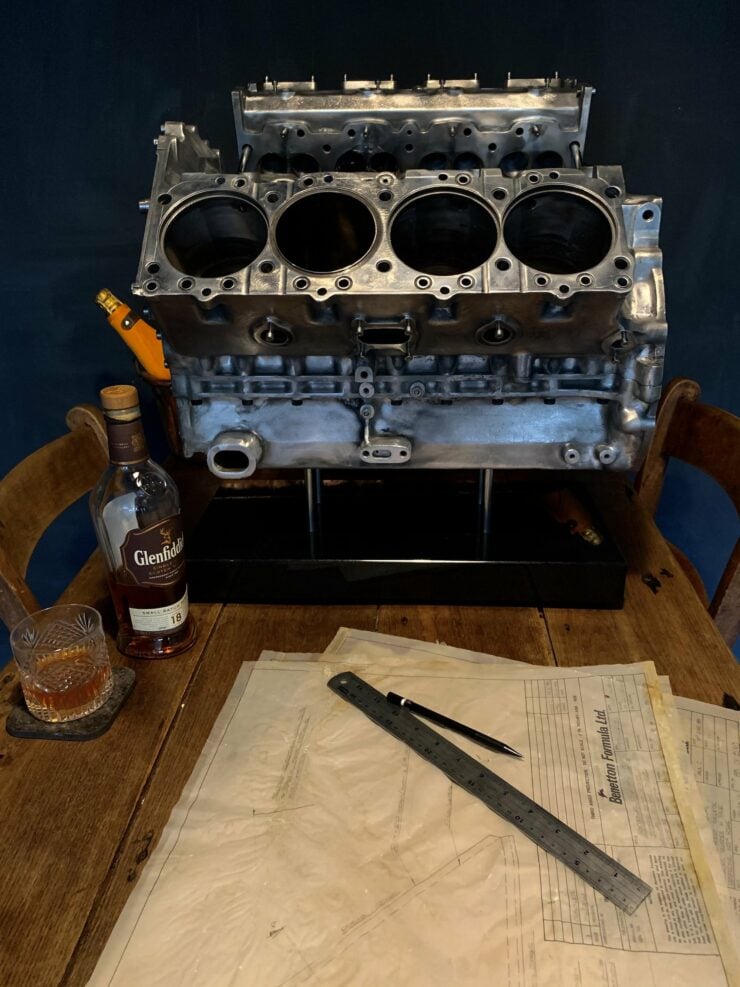

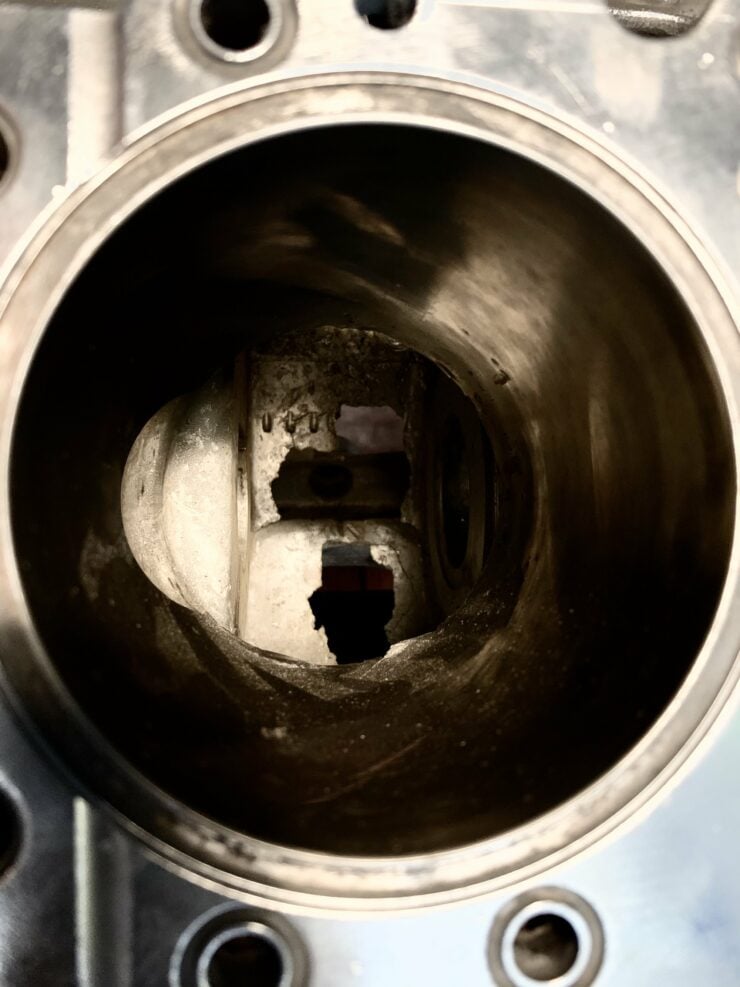

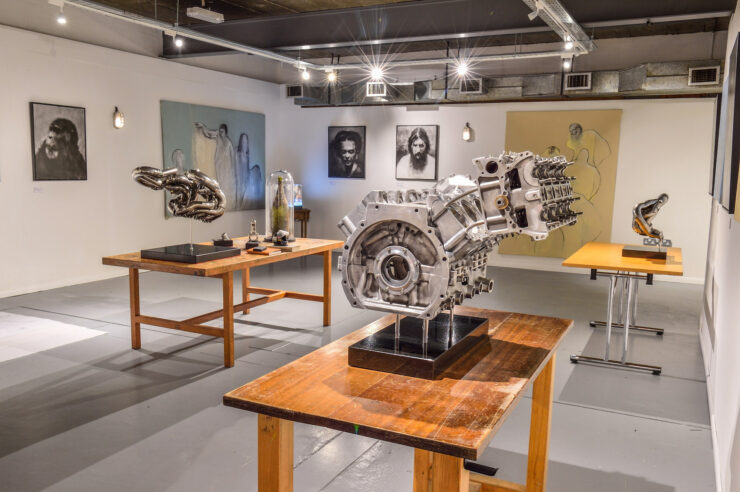
The post This Blown Cosworth DFR Formula 1 Engine Is Now A Sculpture appeared first on Silodrome.
from Silodrome https://silodrome.com/blown-cosworth-dfr-f1-engine/
via gqrds